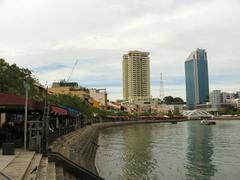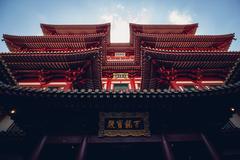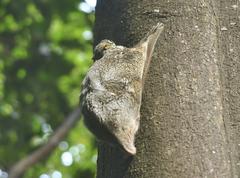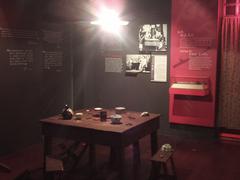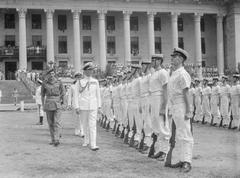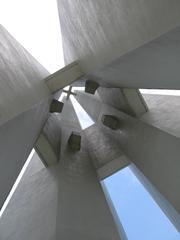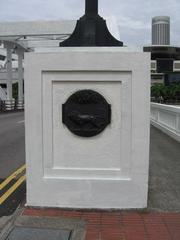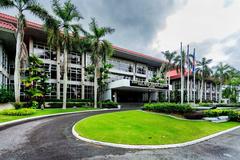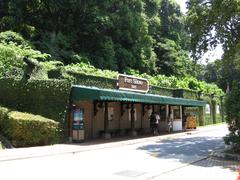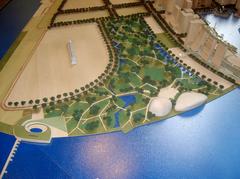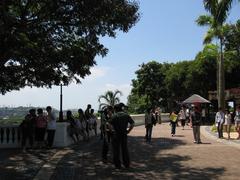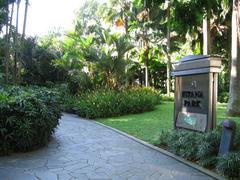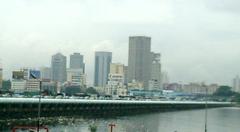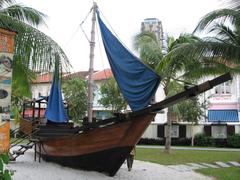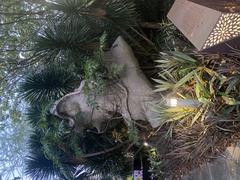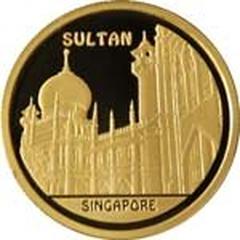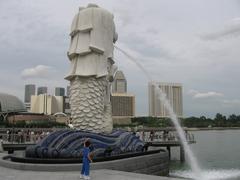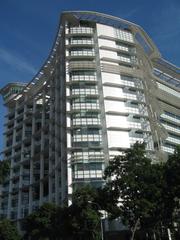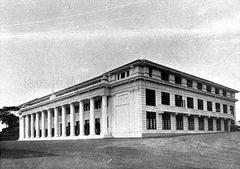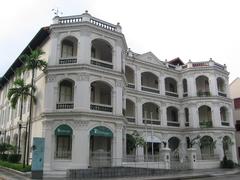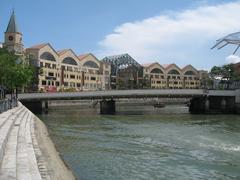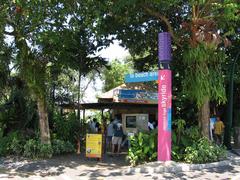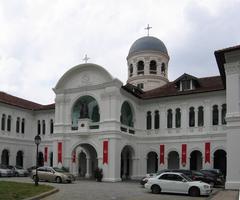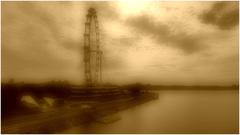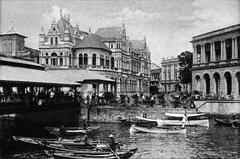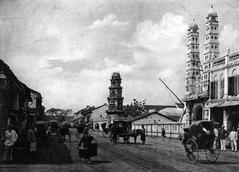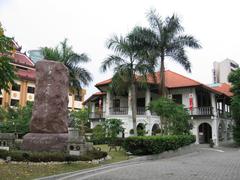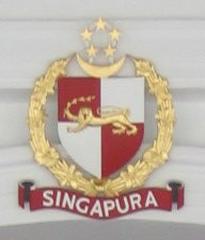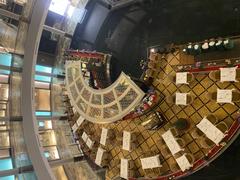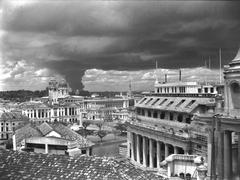
The Cenotaph Singapore: Visiting Hours, Tickets, and Historical Significance
Date: 04/07/2025
Introduction
Within the lush grounds of Esplanade Park in Singapore’s Civic District stands The Cenotaph—one of the nation’s most significant war memorials. This solemn granite monument, designed by Denis Santry of Swan & Maclaren and inspired by Sir Edwin Lutyens’ Whitehall Cenotaph in London, honors soldiers from the Straits Settlements who gave their lives in World War I and II. Rising nearly 18 meters, The Cenotaph is a focal point for national remembrance, reflecting Singapore’s colonial history, wartime resilience, and multicultural ethos through inscriptions in English, Malay, Mandarin, and Tamil.
Visitors are drawn to The Cenotaph not only for its architectural gravitas but also for its deep cultural and historical resonance. It is a site of reflection, education, and commemoration, particularly during annual Remembrance Day and Anzac Day ceremonies. Its proximity to other heritage landmarks like The Padang, Lim Bo Seng Memorial, and the Civilian War Memorial, makes it an essential stop for anyone interested in Singapore’s rich wartime legacy.
This guide provides comprehensive information for planning your visit, including practical tips, historical context, accessibility, and nearby attractions. For the latest updates and in-depth content, consult the National Heritage Board, Visit Singapore, and immersive audio guides like Audiala (Wonderwall.sg; Singapore Travel Hub).
Table of Contents
- About the Cenotaph Singapore
- Architectural Features and Symbolism
- Visiting The Cenotaph: Practical Information
- Historical and National Significance
- Cultural Resonance in Contemporary Singapore
- Visitor Experience and Tips
- Events and Ceremonies
- Preservation and Heritage Status
- Educational Value
- Frequently Asked Questions (FAQ)
- Nearby Attractions
- Conclusion
- References
About the Cenotaph Singapore
The Cenotaph was unveiled in 1922 to honor 124 men from Singapore who died in World War I, later rededicated to commemorate those who perished in World War II. Its strategic location in Esplanade Park, facing the Padang and seafront, connects it to Singapore’s civic and colonial heart.
The monument is marked by a minimalist, imposing granite structure, and its inscriptions in four languages highlight Singapore’s multicultural identity (Wonderwall.sg; Singapore Travel Hub).
Architectural Features and Symbolism
- Granite Structure: The Cenotaph stands nearly 18 meters tall, constructed from local white granite.
- Stepped Plinth: Five steps symbolize each year of World War I (1914–1918).
- Sarcophagus: Sits atop the pylon, representing the fallen.
- Bronze Medallion and Laurel Wreath: Emblems of victory and peace, with the crown representing the British Empire.
- Inscriptions: “They died that we might live” is inscribed in English, Chinese, Malay (Jawi script), and Tamil, reinforcing national unity.
- Bronze Tablets: List the names of those lost in World War I, with later dedications for World War II (LaiSingapore).
Visiting The Cenotaph: Practical Information
Location
- Address: Esplanade Park, Connaught Drive, Singapore 179809
Visiting Hours
- Open: 24 hours daily.
- Best Times: Daylight hours (8:00 AM to 6:00 PM) for safety and clearer viewing.
Admission Fees
- Entry: Free; no tickets required.
Accessibility
- Wheelchair Access: Paved pathways and ramps throughout Esplanade Park.
- Public Transport: Short walk from City Hall MRT (NS25/EW13) or Esplanade MRT (CC3).
- Bus: Several routes serve the area.
- Car: Limited public parking nearby (ApaBuka).
Historical and National Significance
The Cenotaph is a key site of Singapore’s wartime remembrance. The foundation stone was laid in 1920 by Governor Sir Lawrence Nunns Guillemard and the memorial was unveiled in 1922 by the Prince of Wales (later Edward VIII). After WWII, it was rededicated to include those who fell in the Japanese Occupation. Its role as a National Monument, conferred in 2010, emphasizes its enduring value in Singapore’s collective memory (Wonderwall.sg).
Cultural Resonance in Contemporary Singapore
The Cenotaph is not only a memorial but also a living site of civic engagement and education. Its location in Esplanade Park, alongside other monuments like the Lim Bo Seng Memorial, embeds it within Singapore’s broader heritage landscape. The multilingual inscriptions emphasize Singapore’s commitment to racial and religious harmony, and the site is prominently featured in school programs, heritage trails, and national observances such as Racial Harmony Day (Singapore Savvy).
Visitor Experience and Tips
Atmosphere
- The park is tranquil, shaded by mature trees, and offers a contemplative ambiance.
- Visitors typically walk around the monument, read inscriptions, and observe moments of silence.
Customs and Etiquette
- Dress modestly, especially during ceremonies.
- Speak softly and do not climb or sit on the monument.
- Photography is permitted; avoid disturbing ceremonies or blocking pathways.
Practical Advice
- Visit early morning or late afternoon for cooler weather and better light.
- Facilities: No restrooms or food stalls at the memorial, but nearby malls offer amenities.
- Weather: Bring water, sunscreen, and an umbrella.
- Pets: Allowed in the park on a leash but not near the monument.
Offerings
- Flowers and wreaths may be left at the base during remembrance events.
- Burning incense or candles and leaving food offerings is discouraged.
Events and Ceremonies
- Anzac Day (April 25): Wreath-laying and military remembrance for Australian and New Zealand forces.
- Remembrance Day (closest Sunday to November 11): National ceremony with officials, veterans, and public participation.
- National Day (August 9): Occasionally included in celebrations (LaiSingapore; Singapore Travel Hub).
Security is enhanced and certain areas may be cordoned off during these events.
Preservation and Heritage Status
The Cenotaph is protected as a National Monument by the National Heritage Board. Ongoing conservation ensures its inscriptions and structure remain intact, preserving the monument for future generations. Strict penalties are enforced against vandalism, as demonstrated by the prosecution of an incident in 2013 (Wikipedia).
Educational Value
The Cenotaph is a vital resource for history education, frequently visited by school groups. While official guided tours are not always available on site, many heritage trails and digital resources—such as the Audiala app—offer self-guided tours and in-depth stories (Singapore Trip Guide).
Frequently Asked Questions (FAQ)
Q: What are the visiting hours for The Cenotaph?
A: The Cenotaph is open to the public 24 hours a day.
Q: Is there an entrance fee?
A: No, admission is free.
Q: How do I get there by public transport?
A: The monument is a short walk from City Hall MRT and Esplanade MRT stations.
Q: Is it wheelchair accessible?
A: Yes, there are paved pathways and ramps.
Q: Are guided tours available?
A: Many heritage walks and self-guided audio tours include The Cenotaph, but no official tours are stationed at the monument.
Q: Can I bring my pet?
A: Pets are allowed in Esplanade Park but must be leashed and kept away from the monument.
Q: Is photography allowed?
A: Yes, but please be respectful during ceremonies.
Nearby Attractions
- Lim Bo Seng Memorial: WWII resistance hero memorial in Esplanade Park.
- Tan Kim Seng Fountain: Victorian-era monument honoring a philanthropist.
- National Gallery Singapore: Art and heritage museum a short stroll away.
- Esplanade – Theatres on the Bay: Singapore’s iconic performing arts venue (Singapore Travel Hub).
Conclusion
The Cenotaph stands as a profound symbol of sacrifice, unity, and remembrance at the heart of Singapore’s Civic District. With its minimalist elegance, multicultural inscriptions, and enduring message, the memorial invites visitors to reflect on the nation’s wartime past and ongoing commitment to peace. Free and accessible at all times, it is an essential stop for history enthusiasts, students, and travelers alike. Enhance your visit by exploring related landmarks, attending commemorative events, and utilizing digital resources for a deeper understanding of Singapore’s heritage.
For more information and planning tips, visit the National Heritage Board, Singapore Travel Hub, and the Visit Singapore tourism portal.
References
- National Heritage Board
- Visit Singapore
- Wonderwall.sg
- Singapore Travel Hub
- LaiSingapore
- ApaBuka
- Wikipedia
- Singapore Savvy
- Singapore Trip Guide
- NLB









